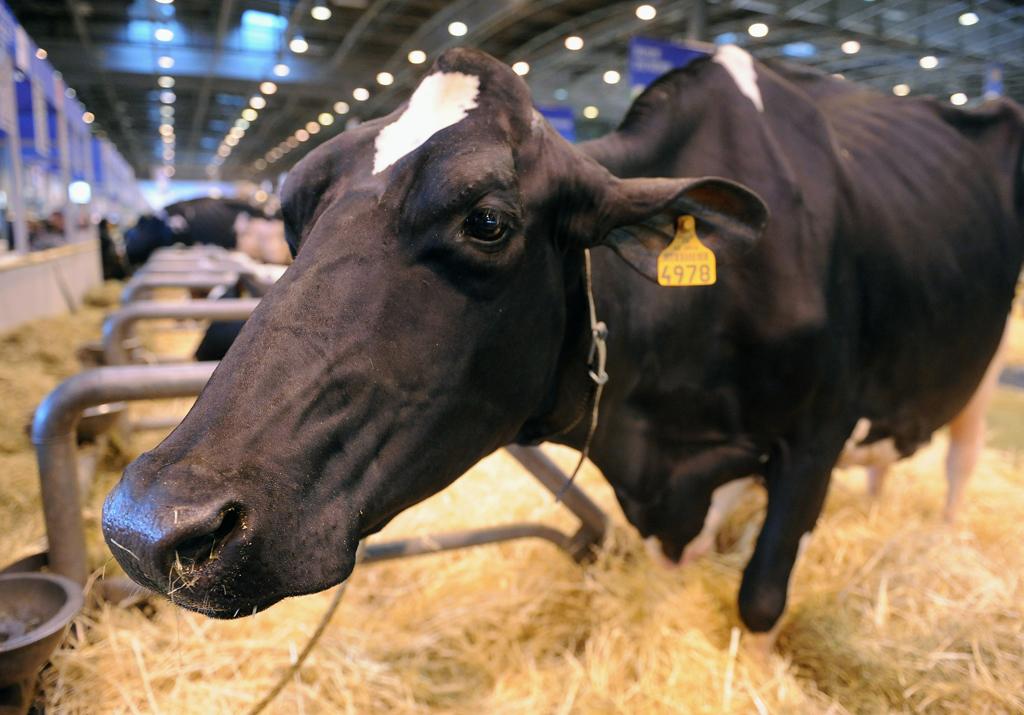Mad cow disease: What is it?
What is mad cow disease, anyway?
Mad cow disease has surfaced in the US for the first time since 2006, this time in California's Central Valley. But what exactly is mad cow disease, anyway? And how does it affect us?
What is mad cow?
Also known by its scientific name bovine spongiform encephalopathy (BSE), mad cow disease is a fatal sickness in cattle that causes the slow deterioration of the animal's brain and spinal cord, eMedicine Health explains. As the tissue degenerates, it takes on a sponge-like appearance.
More from GlobalPost: Mad Cow reported in central California rendering plant (VIDEO)
The illness earned the common name "mad cow disease" because it affects a cow's nervous system, causing bovines to act strangely and lose control of their ability to do normal things, such as walk, according to the Nemours' Foundation. While it primarily attacks the brain and spine, it can be found in any tissue in a cow, including its blood stream.
How does it affect people?
People who eat the meat from diseased cows are at risk of developing the human form of mad cow disease, known as variant Creutzfeldt-Jakob disease (vCJD) or new variant Creutzfeldt-Jakob disease (nvCJD). A rapidly progressive dementia, vCJD and nvCJD cause patients to experience failing memory, behavioral changes, lack of coordination, and visual disturbances. As the illness progresses, people experience involuntary movements, blindness, weakness of extremities, according to eMedicine. 90 percent of patients die within a year of contracting the sickness.
Between October 1996 and November 2002, the peak of mad cow, 129 cases of vCJD were reported in the UK, six in France, and one each in Canada, Ireland, Italy and the United States of America.
There is no cure for prion diseases; while doctors can prescribe treatments to ease symptoms, mad cow is fatal.
No one has been affected by the most recent outbreak, which officials say poses no risk to the food chain or human health.
Where did it come from?
The first two cases of BSE were identified in 1986, when it first appeared in cattle in the United Kingdom, the World Health Organization reported. The disease originated from feeding cattle infected meat-and-bone meal from either cattle or sheep infected with scarpie, a similar sickness.
More from GlobalPost: South Korean retailers halt sales of US beef over mad cow disease
The mad cow epizootic peaked in the UK in January 1993, when almost 1,000 new cases per week were being discovered, the Centers for Disease Control and Prevention reported. From 1993 until the end of 2010, more than 184,500 cases of BSE had been confirmed in the United Kingdom, according to the CDC.
It also spread to countries around the world, and appeared in the United States three times: in Washington state in 2003, in a Texas cow found in 2005, and in one in Alabama in 2006, according to the Los Angeles Times.
Previous scares crippled the US beef industry: exports dropped by more than 70 percent after the first case in 2003, according to the Times.
The nature of the agent that causes mad cow is still debated in the scientific community, according to the WHO. Many believe that it is composed largely, if not entirely, of self-replicating proteins called prions. Others argue that it is a virus-like disease that carries genetic information in nucleic acids. Though strong evidence supports the prion theory, the ability of mad cow to form multiple strains is more easily explained by a virus-like agent, WHO reported.
